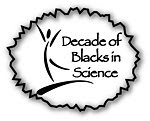Falling for Science is a book of essays edited by Susan Turkle. She asks scientists and college science majors at Massachusetts Institute of Technology:
“Was there an object you met during childhood or adolescence that had an influence on your path into science?”
I was six years old and the thing that got me hooked was hunting for four-leaf clovers. I spent my summers outside playing in local city parks. My mother would often keep me occupied by assigning me the task of finding four-leaf clovers. I took to the activity like Velcro. I was an ace. I could spot the abnormal clover quicker than most other kids and I could find more. I soon challenged myself further, searching only for clovers with five or more leaves. A seven-lobed clover was the highest I found.
I credit this playful exercise for cultivating my ‘scientific thinking’ abilities. It helped me develop a keen sense of observation and critical evaluation early in life. This ability to find four-leaf clovers or needles in the haystack soon translated to my fondness of word puzzles – word searches, cross-words, Scrabble ®. These analytical skills: observation, scrutiny, break down and synthesis are essential tools in my chosen field of animal behavior research. My engineering friends tell similar stories of playing with Lego ® blocks, and the destruction and construction of electronics or other household appliances - usually to the dismay of their parents. These are examples of early behaviors of that indicate a leaning to Science, Technology, Engineering, and Math (STEM) interests.
 A question I often ponder, What happens if such a child does not receive adequate encouragement and support to foster those curiosities and critical science skills? Do we potentially lose our next Einstein? What can we do to nurture the scientific mind in our children and students?
A question I often ponder, What happens if such a child does not receive adequate encouragement and support to foster those curiosities and critical science skills? Do we potentially lose our next Einstein? What can we do to nurture the scientific mind in our children and students?
My answer is simple – take them outside.
Today, many educators are concerned about an epidemic of disconnectedness and anxiousness of today’s students. Urban youth and adults especially seem to be suffering from a mass case of Nature-deficit Disorder. Being disconnected from nature robs students of personal experiences that are essential for hands-on learning – not just about the environment, but about life. Having the opportunity to experience – see, touch, interact with people, objects and wildlife – provides the foundation for referent learning. Take a walk in your neighborhood - to the park or store. The pedestrian experience of your neighborhood is completely different than the one you have when you are driving by. You see things more closely, more fully. You see and hear things you never had before.
For the New Year, resolve to make new memories and share special experiences with your friends and family. Resolve to foster scientific thinking and nature interaction with the youth in your lives. Leave No Child Inside, no matter the season or temperature. Nature always has a gift for us. Nurturing the scientific mind of our youth, all of youth is on the many ways we can attract and retain youth to STEM.
Article originally posted at YBPGuide.com
Image credit: Wiley Price of the St. Louis American. It is featured in my very first published piece in that weekly newspaper - FOCUS ON DIVERSITY: Fixing the pipeline to the science workforce. Thank you all for your support and encouragement; it has opened many doors for me.
Happy New Year!
Danielle
Article orginally posted at YBPGuide.com






















2 comments:
Many congratulations on being a real live dead-tree published author!
Happy Saturday Saturday Sharefest.
Enjoying reading your blog VERY much.
Post a Comment